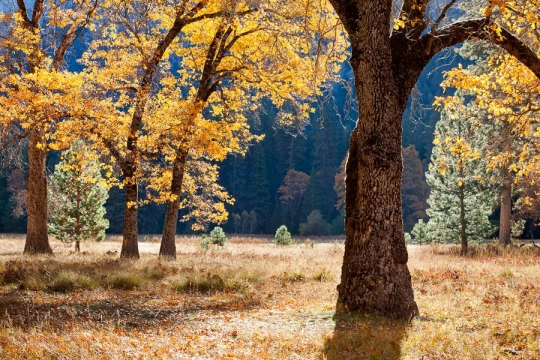Photo from Yosemite Conservancy
John Muir is regarded as a figurehead of the modern environmentalist and naturalist movement. He founded the Sierra Club, and lobbied Congress to preserve and create national parks such as Yosemite and Sequoia, which were both founded in 1890. Undoubtedly, he had a unique reverence for what he considered “wilderness”.
Writing for a publication produced by the California State Board of Trade in 1897, John Muir said the following, “God never made an ugly landscape. All that the sun shines on is beautiful, so long as it is wild; and much in every landscape is unchangeably wild, especially light, which falls everywhere.”[1]
What did ‘wild’ mean to John Muir? It is well documented that both the Yosemite Valley and the Sequoia National Park area were occupied by the Miwok, Yokuts, Salinan, Maidu and Wintun tribes for thousands of years,[2] and that Yosemite was intentionally burned to keep shrub down and promote black oak habitat. [3] The Yosemite Valley that Muir found so pristine was in essence the result of thousands of years of cultivation by Native Californians.
[1] “The Scenery of California,” California Early History: Commercial Position: Climate: Scenery. San Francisco: California State Board of Trade, 1897, 16.
[2]https://www.nps.gov/parkhistory/online_books/berkeley/steward2/stewardc.hm
[3] https://www.nps.gov/yose/learn/nature/upload/Status-Trends-Black-Oaks-2008.pdf
